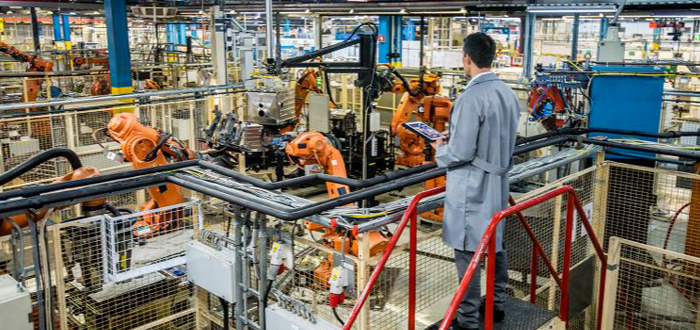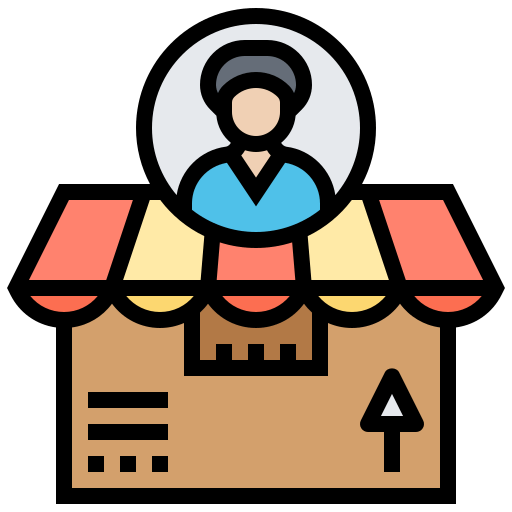Have you been planning to start a business for a while? You may have had a master plan for your soon-to-be-started business in your mind.
But, when it comes to finding a manufacturer for your business…
You might find yourself LOST.
After reading this guide, you’ll get a better direction on how to find manufacturers for your online business.
We have 10+ years of experience in the sourcing field. Hence, you can benefit from our vast knowledge and get guidance so that you can find suitable manufacturers for your product.
Let’s get started with our comprehensive guide to finding manufacturers.

- What is the Manufacturer?
- What is the Difference between Manufacturer and Supplier?
- What are the Different Types of Manufacturers?
- How to Find a Suitable Manufacturer or Manufacturing Company?
- Things to Do After Finding Manufacturer:
- Domestic vs Overseas manufacturers
- Researching and Collecting Industry Information and About Manufacturing Process
- FAQs about Find A Manufacturer:
- Conclusion:
What is the Manufacturer?
A manufacturer is a person or a business company that creates finished goods from raw materials.
Later on, they distribute those finished products to:
- Wholesale suppliers
- Consumers
- Retailers
- Distributors
Then, they sell those goods to the consumers.

Usually, the manufacturers stick to only one kind of product. However, you can work with multiple manufacturers. Working with multiple manufacturers can help you to create an inventory for your online business or brick-and-mortar store with that in mind.
What is the Difference between Manufacturer and Supplier?
Another query that might itch you is if the manufacturer and supplier are the same. And, if they are not the same, what’s the difference between the two?
Though these two terms are synonymous, there is a slight difference between the two.
But, to tell you the least, we can say, a manufacturer is who produces your product. But, the supplier supplies the already created products to any business.
Manufacturers can also supply you with their manufactured products. That, too, directly without relying on the suppliers. But, the suppliers have to rely on manufacturers to provide the products to the businesses. They act as a connection between manufacturer and consumer.
In short:
A manufacturer: Producer
A supplier: Distributor
For more information on suppliers, check “What is Supplier?”
Suggested reading: Best Small Manufacturing Companies
What are the Different Types of Manufacturers?

Below we’ll describe the four types of the manufacturer.
OEM: Open Equipment Manufacturer (OEM) is the brand owner of the product. They either design the product or use the finished product produced by other manufacturers.
For more information on OEM, check “What is OEM?“
ODM: Original Design Manufacturer (ODM) designs and manufactures the product.
For more information on ODM, check “What is ODM?”
OEM vs ODM
The difference between an OEM and ODM is based on the type of relationship you will have with your potential manufacturers.
But, here we have enlisted a few differences:
| OEM | ODM |
| Facilitates the manufacturing of the product | Enables both the design and manufacturing of the product |
| Can be contracted for manufacturing of whole or the component of the product | Has expertise in a few vertical industries |
| May retain intellectual property rights (Depending on the contract) | Generally includes the intellectual property rights (unless stated otherwise) |
Brand Manufacturers: Original branded manufacturers (OEMs) take care of the entire procedure. From design to supply chains.
For more information on brand manufacturers in China, check “How to find brand Manufacturers?”
Trading Company: A trading company is different from a manufacturer. Trading companies are intermediaries between manufacturers and importers or other suppliers.
For more information on trading companies, check Best 15 “Chinese Trading Companies in 2022.”
Suggested reading: Top 10 Chinese Manufacturing Companies
Looking to find a reliable Chinese supplier?
As the best China sourcing agent, we help you find factories, get competitive prices, follow up production, ensure quality and deliver products to the door.
How to Find a Suitable Manufacturer or Manufacturing Company?
You have understood the terms like manufacturers and suppliers and know the different types of manufacturers. Hence, it’s time to find a suitable manufacturer for your products or the manufacturing partner.
Here’s a step-by-step procedure to find a manufacturer for your eCommerce business.
Step 1: Research
The first thing you gotta do is conduct market research. With proper research, you’ll find your manufacturing partner. I have tried multiple methods. Everyone is EFFECTIVE. For example. You can do your research by:
- Checking online manufacturer directories
- Getting referrals
- Searching by NAICS code
- Using Google or other social media forums. (More about that later.)
Step 2: Outreach
Once you are done with the research, you’ll find some suitable product manufacturers. So, you should outreach them, get quotes, and compare your options.
Get at least three quotes from different product manufacturers. And then collect the following information:
- Do they offer custom manufacturing?
- What are their lead timings?
- Shipping costs?
- What are their minimum order quantities (MOQs)?
- Cost per unit?
- Any defect policy?
And more!
The most significant thing you should negotiate with your manufacturing partner is…
Minimum order quantities (MOQs).
You need to understand a few things to comprehend why the supplier has imposed the minimum before negotiating the MOQs. Such as:
- Due to lots of work upfront
- Their preference to work with large buyers
If you understand the reason beforehand, this will help you a ton in the negotiation.
Step 3: Discuss Payment Terms
Most manufacturers or suppliers will need businesses to pay upfront for the complete order. Since inventory is a high cost for suppliers!
Remember! A good manufacturing supplier will have no problem discussing the payment terms. But, it’s a clear red flag if they are not ready to negotiate payment terms.
Step 4: Communicate Your Designs
Manufacturers or suppliers have set product development processes. Such as prototyping and 3D modeling etc.
You can communicate your designs with them through sketches, instructions, and reference photos.
If they don’t do designs, you can take the services of freelance designers or local designers. But, again, it would be an affordable option.
My advice:
Never leave any stone unturned. You should know whether the supplier has a graphic design expert or not.
Step 5: Order Samples
No mistake at this point. Once, I ordered products without sample testing. It failed me.
Request samples from your manufacturer (before going into production).
Suppose the sample is suitable. Date and sign the sample. You can save one or two out of them as your control sample. You can use this controlled sample to assure quality and get a consistent product.
Step 6: Negotiate
Negotiate the payment, MOQ, or anything else you feel is worth discussing with your manufacturer.
The goal of the negotiation is…
“To improve the relationship between you and your potential manufacturer to benefit both parties.”
Keep in mind that a good negotiation paves the way for a long-lasting and healthy relationship with your manufacturer.
Step 7: Place Your Order
If you have conducted a quality control check and everything meets your standard, you have found the right manufacturer for your company. You can place your order now and get started with the production process.
Things to Do After Finding Manufacturer:

After finding the supplier or manufacturer for your business, here are some things you can do so that your production procedure goes smooth:
- Negotiate with Suppliers: I Negotiate with suppliers to iron out complex things. It helps me understand better.
For more information on negotiating with your suppliers, check “How to Negotiate with China Suppliers”.
- Negotiate Payment Terms: You have already discussed payment terms with your manufacturer. It would be best to negotiate payment terms with your suppliers too.
For more information on payment terms, check “How to negotiate payment terms with suppliers?“
- Price a Product: You have done the market research already. Such as, you know:
- What your consumers are looking for;
- What your competition is offering;
- And, how much they charge.
Later, you can work out a price strategy and decide the price of your products.
For more information on product prices, check “How to Price a Product?“
Domestic vs Overseas manufacturers

To meet the demands of your consumers in your dropshipping business, you either source products from domestic or overseas manufacturers.
Each option has its pros and cons. So let’s throw a bit of light over them.
Domestic Manufacturers:
A domestic manufacturer manufactures and delivers all the products in your local country.
Domestic Manufacturer Pros:
- Shorter supply chain
- Quick and reliable delivery
- Quality assurance, inventory management, and planning become easy.
- Shipping your order becomes cheaper.
- Heightens your brand’s image.
What I found in domestic manufacturers:
They are more reliable. You have instant access to the whole production at NO COST.
Domestic Manufacturer Cons:
- Ethical issues are common as you and your manufacturer are in close connection.
- In my location, there are a very LESS number of manufacturers. It is HARD to choose the best.
Overseas Manufacturers:
Overseas manufacturers manufacture and deliver all the products across geopolitical borders.
Overseas Manufacturer Pros:
- Easy to augment products and resources that are not available in your country.
- I get a diversity of suppliers. More suppliers, easy selection for the suitable one.
- More efficient and effective supply chain management system.
- Lower manufacturing cost
Overseas Manufacturer Cons:
- Time zone differences and longer shipment times
- The communication barrier is the biggest problem I have ever faced. It is hard sometimes, very hard.
- Difficult to verify and visit the manufacturer on-site
Looking to place an order with a new Chinese supplier?Are you sure they’re reliable?
Secure your supply chain by checking your suppliers’ ethical, environmental, social and manufacturing capacities for compliance through Leeline’s Supplier Audit Programs.
Researching and Collecting Industry Information and About Manufacturing Process
Below you’ll see some more tips to research and collect industry information from the manufacturers. Also, you’ll get to peek inside their manufacturing process.
Request for Information (RFI):
Remember, you have to collect all the much-needed information from your potential manufacturer in written form. This process of information collection is called RFI.
For more information on Request for Information (RFI), check “How To Write A Request For Information (RFI)“
Request for Quote (RFQ):
RFQ is the process when a company like yours asks the supplier to submit the quotes for their project.
For more information on Request for Quote (RFQ), check “Article.“
Suggested reading: Best 7 Ways to Use Alibaba RFQ
Minimum Order Quantity (MOQ):
Before placing the order, ask your manufacturer/supplier about the minimum order quantity they’ll provide you.
The rule of thumb about the MOQs is, “The lesser, the better.”
For more information on Minimum Order Quantity (MOQ), check “Article.“
Setup Fees:
Research the setup fees for each unit and know about the cost price offered for each unit. Some manufacturers also charge some amount to organize their equipment for manufacturing.
Minimum Stock:
Inspect the minimum stock as well. It’s the minimum quantity of an item that must be kept.
For more information on Minimum Stock, check “How to Figure Out Minimum Stock Level“
Cost of Goods Manufactured:
Cost of goods manufactured in the calculation of the total value of inventory produced during a specific period and is ready for sale.
For more information on Cost of Goods Manufactured, check “How to calculate cost of goods manufactured(COGM)“
Suggested reading: How to pay suppliers on Alibaba via Pay Later?
FAQs about Find A Manufacturer:
How Do I Find and Contact a Manufacturer?
You can find and contact a manufacturer by researching and negotiating the right way. To find and contact a manufacturer, follow these steps:
Research
Outreach
Discuss payment terms AND contact designs
Negotiate
Can I Find a Few Manufacturers on Alibaba?
Absolutely yes. Alibaba helps exporters, buyers, and small business owners find the right manufacturer for their eCommerce or dropshipping business.
Suggested reading: Alibaba Suppliers
Why Should I Manufacture in China?
Manufacturing in China is way cheaper than making goods in many other countries. So you can get better margins and lower prices for end-users with lower manufacturing costs.
Where Can I Find Chinese Manufacturers?
You can find Chinese manufacturers on online directories and search engines and find Chinese manufacturers on Alibaba.
How do I get my idea manufactured?
First, be clear about whether your idea is capable of being a product. Then outline the concept of your product or create a model of it. Next, research some manufacturers that can mass-produce your products at reasonable rates. You will also have to gather and decide on certain parameters to finalize suppliers. Factors like cost-per-unit, minimum order quantity (MOQ), and sustainable sourcing must be considered.
Also, the cost of defective products will be borne by whom. Check for setup and other hidden costs. Is the lead time short? Will they be willing to produce custom products on demand? Would you like to make your products at home or overseas? Then you can begin speaking with manufacturers. Based on which of them agrees to your criteria, you can choose them. Finally, you can begin production.
How much does it cost to hire a manufacturer?
In the product process, we find that there are three types of manufacturing costs. Let us see each one in detail below:
Total manufacturing cost: This is the total sum of the resources spent on manufacturing a product. There are three resource components in this. They can be direct or indirect components.
Direct Manufacturing cost: All materials are directly part of the manufacturing process. It can be the labor force or raw materials.
Indirect Manufacturing cost: These include costs not tangibly involved in the process. It could be maintenance costs or utility bills etc.
The three cost components are as follows:
Raw materials: These are materials used to create the product.
Labor force: The staff who assemble and refine the products.
Overheads in production: Indirect materials or maintenance of machines. Even labor in a support role is included here.
There is also a formula for calculating total manufacturing cost as follows:
Manufacturing cost = Sum Of (Raw material cost, Labour cost, Production overhead cost)
Conclusion:
Locating a reputable manufacturer for your online store or small businesses can sound overwhelming at first for online sellers. However, if you follow the process and check with the Better Business Bureau (BBB), you can rest assured of your professional networks.
And, you can find suppliers easily. Another way to find your ideal product manufacturers is to attend every trade show in your locality.
Good luck with your hunt!
Need help finding the manufacturer for your business? We can help! For more information, visit our services page.








